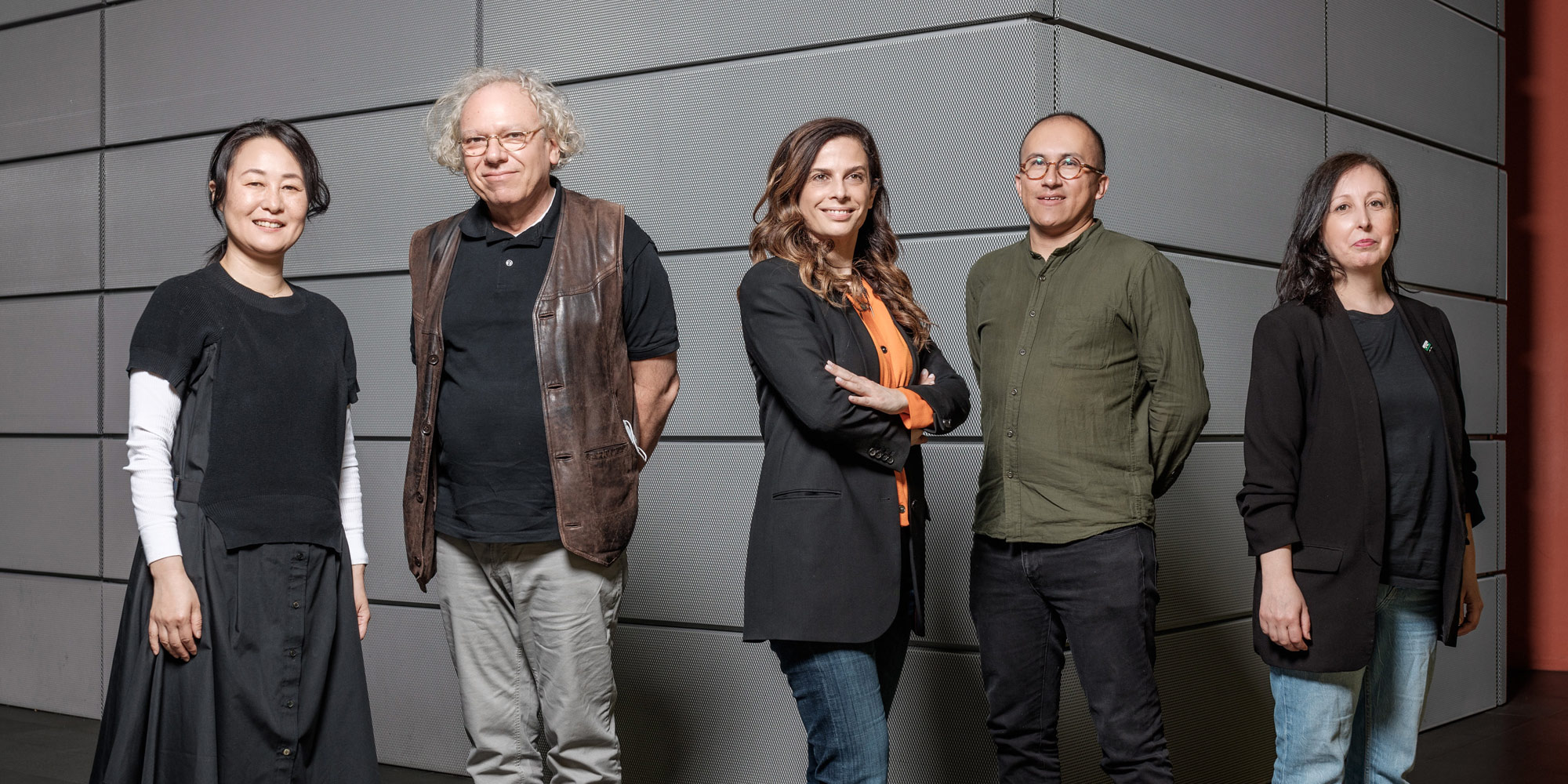S+T+ARTS Prize Jury 2022
Alle Einreichungen werden von einer Jury bewertet, die zwei Sieger*innenprojekte und bis zu 10 Anerkennungen auswählt.
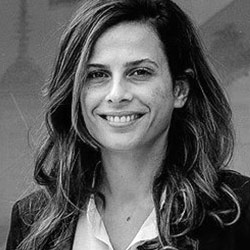
Francesca Bria (IT) ist die Präsidentin des Nationalen Innovationsfonds Italiens und Ehrenprofessorin des Instituts für Innovation und öffentliche Zwecke an der UCL in London. Sie ist Senior-Beraterin der Vereinten Nationen (UN-Habitat) für digitale Städte und digitale Rechte. Francesca Bria leitet das DECODE-Projekt zur Datenhoheit in Europa und ist Mitglied der hochrangigen Expertengruppe der Europäischen Kommission zu den wirtschaftlichen und gesellschaftlichen Auswirkungen von Forschung und Innovation (ESIR). Francesca hat einen Doktortitel in Innovation und Unternehmertum vom Imperial College, London, und einen MSc in digitaler Wirtschaft von der Universität London, Birbeck. Sie lehrte an mehreren Universitäten in Großbritannien und Italien und beriet Regierungen, öffentliche und private Organisationen.

Andres Colmenares (CO/ES) ist Mitbegründer von IAM, dem kreativen Forschungslabor, das verantwortungsbewussten Bürger*innen und Organisationen hilft, bessere Entscheidungen zu treffen und gleichzeitig die sozio-ökologischen Auswirkungen digitaler Technologien und Infrastrukturen untersucht. In seiner Rolle als Stratege, kuratorischer Designer und kreativer Berater hat er Partnerschaften mit Organisationen wie NESTA, Tate, Red Bull, University of Arts London und BBC geleitet und entwickelt. Darüber hinaus ist er Co-Direktor des Billion Seconds Institute, einer Initiative für lebenslanges Lernen zur Neugestaltung der digitalen Wirtschaft, und Organisator des IAM Weekend, eines jährlichen Treffens in Barcelona für Kreativschaffende, die gemeinsam die Zukunft des Internet neu überdenken wollen. Er ist Dozent des Masters in Design for Emerging Futures am Institute for Advanced Architecture of Catalonia und wurde als Gastdozent an Institutionen wie der Merz Akademie, der Berghs School of Communication und der ELISAVA School of Design & Engineering in Barcelona eingeladen, wo er derzeit einen neuen Masterstudiengang über die Auswirkungen von Kunst, Design und KI in der Gesellschaft leitet. Er hat außerdem Meinungsartikel und Kurzgeschichten für Publikationen wie CRACK Magazine, Branch Magazine, The Site Magazine und LS:N Global verfasst.

Lucía García (ES): studierte Rechtswissenschaften an der Universidad Complutense de Madrid und absolvierte ein Aufbaustudium in Europäischen Angelegenheiten und Management von Kultureinrichtungen. Sie begann ihre berufliche Laufbahn mit einer Ausbildung als Maklerin und Risikoanalystin in Paris und London. Danach kehrte sie nach Madrid zurück, um als Koordinatorin der International Fashion Week zu arbeiten. Später war sie sechseinhalb Jahre lang kaufmännische Leiterin der ARCO, der internationalen Messe für zeitgenössische Kunst in Madrid, Spanien. Im August 2006, ein Jahr vor der offiziellen Eröffnung, kam sie zum LABoral Centro de Arte y Creación Industrial, um als Generalkoordinatorin und Leiterin der öffentlichen Programme eng mit der Gründungsdirektorin zusammenzuarbeiten und das Projekt zu starten. Im September 2011 wurde sie zur Geschäftsführerin und Generalsekretärin von LABoral ernannt, eine Position, die sie 15 Jahre lang, bis Juni 2021, innehatte. Im August 2021 wurde sie zur Generaldirektorin des iMAL (Interactive Media Art Laboratory) in Brüssel gewählt.
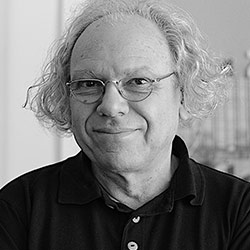
Alexander Mankowsky (DE): Geboren 1957 in Berlin, hat Alexander Mankowsky ganz zeitgemäß Soziologie, Philosophie und Psychologie an der FU Berlin studiert, und als Balance dazu künstliche Intelligenz und Wissensverarbeitung erlernt. Er war Einzelfallhelfer für benachteiligte Kinder und Jugendliche, Knowledge Engineer für Expertensysteme in Lisp und Prolog, Trendforscher und ist aktuell Futurist, manche sagen auch Zukunfts-Philosoph. Er ist am S+T+ARTS Prize der EU zur Verbindung von Wissenschaft, Technologie und Kunst als Jurymitglied der ersten Stunde beteiligt, sowie Gründungsmitglied von future.io zu „Exponential Technologies and Desirable Futures“. In der Mercedes-Benz Forschung arbeitet er aktuell an Antworten auf die Klimakrise im Spektrum vom psychologisch therapeutischen Verständnis der Akteure, bis hin zu technischen Möglichkeiten der Reduktion von Treibhausgasen in der Atmosphäre. Für Alexander Mankowsky steht die Entwicklung von wünsch- und machbaren Zukunftsentwürfen im Zentrum.
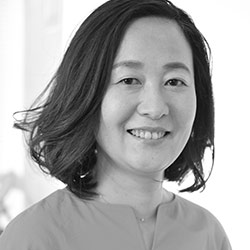
Asako Tomura (JP) ist General Manager der Corporate Technology Strategy Division bei der Sony Group Corporation. Außerdem ist sie Gastwissenschaftlerin an der Universität Tokio und Beraterin für das Projekt zur Unterstützung aufstrebender Medienkunstschaffender, der Agentur für kulturelle Angelegenheiten, und der Regierung von Japan. Sie verfügt über 25 Jahre Erfahrung als Expertin für Content-Plus-Sustainability, mit besonderem Schwerpunkt auf der Integration fortschrittlicher Technologien. Nach ihrem Master-Abschluss in Chemie und Medienkunst an der Keio-Universität begann sie ihre Karriere in der Werbung bei Shiseido. Im Jahr 2001 wechselte sie zur Sony Corporation, wo sie bei Sony Pictures Entertainment (Japan) und Aniplex, Inc. den Aufbau des Vertriebs digitaler Inhalte für Filme und Animationen leitete. Als Leiterin der CSR-Innovationsabteilung im Sony-Hauptquartier arbeitete sie von 2010 bis 2014 mit NGOs, den Vereinten Nationen und anderen Organisationen an Projekten, bei denen Technologien zur Lösung sozialer Probleme eingesetzt wurden. Derzeit ist sie für die Entwicklung von Sci&Tech-Kommunikation und Nachhaltigkeit zuständig.
S+T+ARTS Prize Advisors 2022
Die Advisors sind renommierte, internationale Berater*innen mit Expertise auf diesem Gebiet. Sie empfehlen Projekte und ermutigen ein breites Spektrum an möglichen Teilnehmer*innen zur Einreichung. Darüber hinaus achten sie auf Ausgewogenheit hinsichtlich Geschlecht und geografischer Herkunft der Teilnehmer*innen.

Ghislaine Boddington (UK) ist eine preisgekrönte Künstlerin, Kuratorin, Regisseurin und Moderatorin, die sich auf den Menschen der Zukunft, körperbezogene Technologien und immersive Erfahrungen spezialisiert hat. Sie ist Mitbegründerin und Kreativdirektorin von body>data>space, einem bahnbrechenden Kollektiv für interaktives kreatives Design, das sich seit den frühen 1990er Jahren dafür einsetzt, dass der lebendige Körper im Mittelpunkt der digitalen Debatte steht. Mit einem Hintergrund in Tanz und darstellenden Künsten und einem langfristigen Fokus auf die Verschmelzung unserer virtuellen und physischen Körper beschäftigt sie sich mit hochaktuellen und zukünftigen digitalen Themen für unsere lebenden Körper, einschließlich der Nutzung persönlicher Daten, Identität und Repräsentation des Selbst, vernetzten Körpererweiterungen, digitaler Intimität und kollektiver Verkörperung der Zukunft.
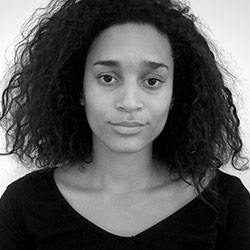
Amanda Masha Caminals (ES) ist Co-Direktorin und Kuratorin des Mutant Institute of Environmental Narratives (IMNA), dem Laboratorium von Matadero Madrid, das künstlerische Praktiken in Verbindung mit Journalismus, Wissenschaft und Technologie als Antwort auf die Herausforderungen der Klimakrise fördert. Zuvor leitete sie die CITY STATION der Environmental Health Clinic der Künstlerin Natalie Jeremijenko im Centre for Contemporary Culture of Barcelona (CCCB). Sie ist Gründerin der Organisation Translocalia, einem Netzwerk von Künstlern, Kuratoren und Designern, die durch Kunst für die Zukunft planen. Sie hat einen BA in Geisteswissenschaften, einen Abschluss in Kunstgeschichte und einen MA Hons in der Kuratierung zeitgenössischer Kunst des Royal College of Art in London.
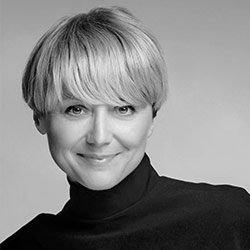
Michela Magas (GB/HR) ist eine Designerin, die eine Brücke zwischen Wissenschaft und Kunst, Design und Technologie sowie akademischer Forschung und Industrie schlägt. Sie ist Vorsitzende der Industry Commons Foundation, Innovationsberaterin der Europäischen Kommission und der G7-Staats- und Regierungschefs, Mitglied von Präsidentin von der Leyens hochrangigem Runden Tisch für das Neue Europäische Bauhaus und Mitglied des Beirats von CERN IdeaSquare (ISAB-G). Michela ist die Gründerin des in Stockholm ansässigen MTF Labs und hat in den letzten 10 Jahren mit ihrer globalen Gemeinschaft von 8.000 Mitwirkenden aus Kunst und Wissenschaft die Politik direkt von der Basis aus mit Experimenten versorgt. 2017 wurde sie als „European Woman Innovator of the Year“ ausgezeichnet und 2016 erhielt sie von der Europäischen Kommission und Intel Labs Europe einen Innovation Luminary Award für kreative Innovation.
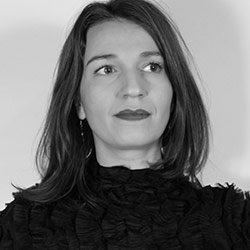
Areti Markopoulou (GR) ist Architektin, Forscherin und Stadttechnologin, die an der Schnittstelle zwischen Architektur und digitalen Technologien arbeitet. Sie ist akademische Direktorin am IAAC in Barcelona, wo sie auch die Advanced Architecture Group leitet, eine multidisziplinäre Forschungsgruppe, die untersucht, wie Design und Wissenschaft die Gegenwart und Zukunft unserer gebauten Räume, die Art, wie wir leben und interagieren, positiv beeinflussen und verändern können. Ihre Forschung und Praxis konzentriert sich auf die Neudefinition der Architektur von Städten durch ein ökologisches und technologisches Spektrum, das Design mit Biotechnologien, neuen Materialien, digitaler Fertigung und Big Data kombiniert. Areti ist Mitbegründerin der Kunst/Technik-Galerie StudioP52 und Mitherausgeberin von Urban Next, einem globalen Netzwerk, das sich mit dem Überdenken der Architektur im zeitgenössischen urbanen Umfeld beschäftigt. Sie ist Projektkoordinatorin einer Reihe von Projekten, die von der europäischen Forschung finanziert werden, zu Themen wie Stadterneuerung durch Datenwissenschaft, Circular Design und Konstruktion von multidisziplinären Bildungsmodellen im digitalen Zeitalter.
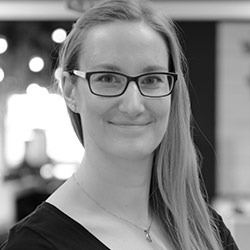
Lisa Przioda (DE) studierte Kommunikationswissenschaft (B.A.) an der Ludwig-Maximilians-Universität in München und Kommunikationsmanagement an der Universität Hohenheim (M.Sc.) in Stuttgart. Seit 2015 ist sie Teil des Innovation Management Global Teams im Unternehmensbereich Forschung und Vorausentwicklung der Robert Bosch GmbH in Renningen bei Stuttgart/Deutschland. Innerhalb der Abteilung ist sie für den Innovations- und Kreativraum „Platform 12“ auf dem Forschungscampus sowie für den firmeneigenen Coworking Space „X-Change Lab“ verantwortlich. Von 2015-2020 organisierte sie für das Unternehmen das „Wimmel Research Fellowship“, ein Stipendium für Künstler mit dem Ziel, den Dialog zwischen Forschung, Kunst und Wirtschaft für alle Beteiligten zu fördern.
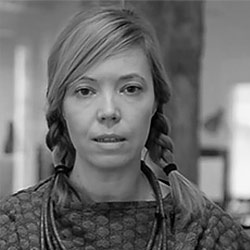
Nana Radenković (RS) ist eine der Mitbegründerinnen von Nova Iskra, wo sie sich auf die Schaffung von Mentoring-Programmen, Schulungen und Workshops für Einzelpersonen, Organisationen und Unternehmen konzentriert, die daran interessiert sind, eine aktive Rolle in den Prozessen der Transformation zu übernehmen – nicht nur ihrer Projekte und Unternehmen, sondern auch durch die Schaffung neuer Wege, in denen wir in Zukunft lernen, leben und arbeiten könnten. Sie hat einen MA in Management in Kultur, Interkulturalität und Mediation auf dem Balkan von der Universität der Künste Belgrad und verfügt über umfangreiche Erfahrungen in der Arbeit im privaten, öffentlichen und zivilen Sektor. Sie ist Professorin an der Fakultät für Medien und Kommunikation in Belgrad und Mentorin im Rahmen des Nelt Educational Program und Creative Mentorship.

Kei Shimada (JP) ist ein japanisch-amerikanischer Unternehmer, Angel Investor und derzeit Leiter des Digital Makers Lab bei IBM Japan. Außerdem berät er Unternehmen bei der digitalen Transformation. Kei’s Stärke liegt in der Identifizierung und Lösung komplexer Probleme. Einer seiner Schwerpunktbereiche ist das Krisenmanagement und die Kommunikation, was ihn dazu veranlasst hat, Japans erste umfassende nationale Datenbank für Evakuierungsunterkünfte zu erstellen, die de facto zu einer der wichtigsten Datenbanken des Landes geworden ist. Seine andere Stärke liegt in der kreativen Umsetzung, zuletzt leitete er ein Team, das 2019 das weltweit erste klassische KI-Konzert bei der Ars Electronica produzierte. Kei ist einer der aktivsten Vortragenden Japans, der bereits in über 20 Ländern Vorträge und moderierte Panels gehalten hat.

Kei Takeuchi (JP) ist stellvertretender Generaldirektor der Abteilung für Marken- und Innovationsdesign bei der japanischen Werbeagentur HAKUHODO. Er arbeitet mit Kund*innen an der Markenbildung und Innovation durch „die Integration von Logik und Sensibilität“ und „Co-Kreationsprozesse“. Außerdem leitet er das Kooperationsprojekt mit ARS ELECTRONICA.
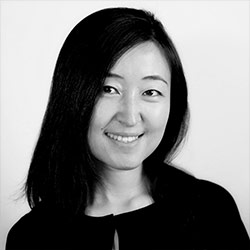
Lining Yao (CN) ist Assistenzprofessorin am Human-Computer Interaction Institute (HCII) der Carnegie Mellon University, School of Computer Science, und leitet dort das Morphing Matter Lab. Das Morphing Matter Lab entwickelt Materialien, Werkzeuge und Anwendungen von adaptiven, dynamischen und intelligenten Morphing-Materialien. Iher Forschung kombiniert Materialwissenschaft, rechnergestützte Fertigung, kreative Kunst und Designpraktiken. Das Labor arbeitet antidisziplinär und publiziert in den Zwischenbereichen von Wissenschaft, Technik, Design und Kunst. Lining promovierte 2017 am MIT Media Lab.
Technology Without Meaning is Meaningless
Statement of the S+T+ARTS Prize ’22 Jury (Francesca Bria, Andrés Colmenares, Lucía García, Alexander Mankowsky, Asako Tomura)
For this year’s S+T+ARTS Prize, 1,499 submissions came from 96 countries, 860 of these were directly submitted to the S+T+ARTS Prize portal; in view of the rather difficult-to-describe relationship between “science, technology and the arts” as a stimulus for the industry, this alone is a tremendous success. The extent of the collaboration between the European Union and Ars Electronica is astounding.
What is STARTS? What purpose does it serve? This is easiest to explain through a comparison with start-ups. Start-ups process technologies in a utilitarian manner: by creating business cases. In STARTS, on the other hand, technologies are utilized as media for meaning and sense: the result is poetic statements with a technological element.
Both approaches to innovation have their validity, but at different points in the process. Innovation processes in the automotive industry, for example, work with a funnel model: all the ideas that come from somewhere are screened based on previously determined criteria; at the end of the funnel, they are translated into concrete product innovations that are actually to be developed. For this “somewhere” that spawns the ideas, so-called jam sessions with start-ups are held. Pitches are made that begin with making the world a better place (unsurpassable in this regard is the series Silicon Valley, HBO 2014), and then become lost in the weeds of technological details. If it is clear from the outset for what area solutions are to be found, this process is fairly likely to lead to success. The sense-or-nonsense question is not addressed.
It is a different matter if the search area cannot be so clearly defined. As soon as it becomes about designing desirable and viable futures, the cultural message becomes the focal point. It must be truly groundbreaking in order to be able to serve as a framework for the later introduction of specific steps in industrial research and development. And this is where the relevance of STARTS lies: in the connection of science and technology with cultural longings and fears, using the artwork as a medium.
In this year’s jury conference, we narrowed down the 1,499 entries to 110 art projects. In keeping with the philosophy of STARTS, they were divided into two large categories: in one, the focus was on the artistic personality, in the other the transferability of the art project to other content in the sense of “best practice.”
If one looks at the entries from 2016 to today, a shift to collaborative work is evident. This may be due to the fact that the civilization-driven warming of the planet is becoming an increasingly dominant topic. The inherent complexity of climate change simply demands the teamwork of artists with scientific and academic institutions, which is clearly evidenced by Antarctic Resolution, curated by Giulia Foscari.
An impressive proportion of the artistic community is active in this context: the open-source project The Exploded View Beyond Building, for example, shows how entire houses can be built from biologically based and industrially produced basic materials that are already available today. At the other end of the spectrum are the DIY projects inspired by the spirit of the prepper movement, such as UITSLOOT, by Gijs Schalkx. “Don’t outsource your ethics,” he writes. KompleX KapharnaüM’s A Sun Architecture – The Party is in Full Swing powers music concerts with solar energy. Ethical considerations motivate artist-designers to take action. They no longer want to wait for large-scale societal solutions.
The view of the biosphere, on the other hand, has an almost melancholic feeling. With Inanimate Species, Jonathan Ledgard and Alex Ritcher-Boix contrast the obliteration of all life with the creation of death. Civilization’s increasing orientation toward “necrophilia”—as Erich Fromm called the opposite of “biophilia,” the orientation toward life—is becoming oppressively apparent. In her Plant Intelligence Plan, Zhang Tianyi creates chemical-mechanical protheses for plants in order to make visible their (necrophilous) degradation to purely crop plants.
In April 2022, an additional acceleration of greenhouse-gas emissions was recorded. It is no wonder, then, that some artists seek an avenue of escape in the romanticism of scientific magic. In AdS/CFT 001, Mikromedas translates the depictions of cosmic black holes into suggestively internalized image and sound forms.
The second noticeable cluster was digital-robotic. While at the beginning of STARTS in 2016, there were largely vague promises of “artificial intelligence,” today—six years later—the view of everything digital, including artificial intelligence, has become more pragmatic. Robots are introduced as avatars for real people, who can now participate in life despite their disabilities. The technology-related lack of communication skills that robotic constructions have are compensated for by humans. In 2013, the job of bartender was still regarded as a highly automatable. In a playful manner, Oryelab, OYAMATSU, and TASUKI turn the much-hailed use of robots as bartenders into an emancipatory human-machine symbiosis with Avatar Robot Cafe DAWN ver.ß.
The reason why robots, whether physical or purely digital, become so bogged down in terms of communication when they are left to their own devices, is given by Elisa Giardina Papa in her project Cleaning Emotional Data. Click workers are compelled to classify pictures they are shown to a category of emotion, one every second. The mechanized results are correspondingly one-dimensional.
More promising, on the other hand, are digital creations in which the human element is not conserved as an ingredient but remains an animated point of departure. Herndon succeeds in this in an especially playful manner. With her digital twin, Holly+, she has created a wonderful, confidence-bolstering example for a digital tool that expands human abilities. The prerequisite for this is free access to the necessary technologies and ample time—which Herndon had due to the pandemic.
The flip side of Big Data and AI with regard to a utilization of digital technologies as a weapon against people was illustrated most drastically by Digital Violence: How the NSO Group Enables State Terror by Forensic Architecture.
The discussions in the jury were very intense. Every submission was discussed extensively, as at some point a majority decision had to be made. This was made quite difficult by the tremendous submissions.
In the spirit of STARTS as outlined at the beginning, the artists convey strong messages:
- The “cultural longing” to finally DO SOMETHING about the climate crisis is expressed in manifold ways. Industrial innovation should thus be geared toward the production of tools that are helpful to this end.
- Ethics are brought down to earth from the nebulous heights of declarations of intent. Applied ethics means offering products that are useable in the here and now.
- This applies not only to physical products but is equally a basis for digital innovations, whose downsides are now well known.
The playful approach to technology is a basic characteristic of humanity. It is crucial to understand this talent and take it into consideration in the development of products and services.
S+T+ARTS Prize ’22
Grand Prize – Innovative Collaboration
Awarded for innovative collaboration between industry or technology and the arts (and the cultural and creative sectors in general) that opens new pathways for innovation.
Antarctic Resolution, Giulia Foscari, UNLESS
Although the images from Antarctica have become somehow iconic for the looming planetary change, besides a few experts, most of us don‘t have any understanding of the very fragile ecosystem of Antarctica and its importance to the whole planet. How can we not just see the symptoms but understand the causations and consequences? This is the major challenge that the fascinating project Antarctic Resolution, initiated, curated and enabled by Giulia Foscari / UNLESS, is set to take on, and with this in mind it is no longer surprising that it is probably the largest and most diverse collaboration ever to win this award for innovative collaborations. Giulia Foscari herself is an excellent example for multi- and cross-disciplinary expertise: architect researcher, activist, founder, educator, working in and at the hotspots of globalization and collaborating with local communities as well as with many big shots in architecture and urban planning, she built not only a comprehensive knowledge and overview of the ongoing climate change but also wove an immense network of experts and gained broad reputation with her presentations in many high profile art exhibitions and events. One of the many characteristics and features often attributed to art is its ability to make the obvious also seeable, the understandable also comprehensible and this is one of the high qualities of Antarctic Resolution. It opens up new perspectives and insights by leveraging the means and powers of art as a research practice as well as a way to enable awareness and concern, participation and involvement. It is not only a remarkable evidence of the growing number of art projects that go beyond addressing the topic of climate change but engage in the activism that is necessary to tackle it. Antarctic Resolution is also an amazing collaborative achievement with over 150 experts collaboration and contributing. And last but not least it is an exciting, almost breathtaking art installation.
S+T+ARTS Prize ’22
Grand Prize – Artistic Exploration
Awarded for artistic exploration and art works where appropriation by the arts has a strong potential to influence or alter the use, deployment, or perception of technology.
Holly+, Holly Herndon, Mathew Dryhurst
One of the most important roles artists can play in 21st-century societies is to anticipate the risks, challenges, and opportunities for the many innovations that are emerging from the adoption and evolution of complex sociotechnical systems based on perplexing fields of study such as cryptography or artificial intelligence. Through extensive creative research, critical open experimentation, and innovative collaborations, Holly Herndon, Mathew Dryhurst, and the network of collaborators they weaved between Berlin, New York, and Barcelona, have been able to develop a unique hybrid project with Holly+, merging a new custom voice instrument with a creative platform and a test of a decentralized and cooperative economic model that can have deep implications in changing the power dynamics of copyright and IP in the music industry, while raising questions of the interdependencies of a digital economy, digital sovereignty, and digital identity. By asking (and performing) a difficult, poetic, and potentially metaphorical question—“What does it mean to own a voice?”—this project gives us a brilliant example of how artists, governments, and citizens can use and play with methods such as machine learning to rethink our interrelationships with digital technologies, the societal potential and perils of automation, and the augmented value of communal ownership and distributed governance systems.
S+T+ARTS Prize ’22
Honorary Mentions
A Sun Architecture – The Party is in Full Swing, Stéphane Bonnard, KompleX KapharnaüM
The ongoing energy crisis is presenting a huge challenge to governments across Europe and opening the floor for important debates on our relationship with energy and the politics of energy sources, both as a society and as individual citizens. With A Sun Architecture – The Party is in Full Swing, the interdisciplinary team of KompleX KapharnaüM presents an artistic proposition, built on an architectural kit that uses printed photovoltaic surfaces and flexible batteries to tap into a critical question in an experiential and immersive way: “If energy is limited, who will decide how to use it?” Bringing this high-level topic to a personal decision context, this project allows citizens to reduce the abstraction of this socioeconomic challenge and reflect on the tensions between individual and communal priorities. Through this solar-powered live performance supported by an eclectic mix of engineering, political, and architectural mindsets, they are not only advocating for energy autonomy but also moving one step away from technological solutionism, and also dealing in a playful way with the compounded politics of energy use, asking creatively what happens when a resource that is often perceived as endless and is taken for granted in many parts of the world is rationed.
Ambient Weaving, Hosoo Co., Ltd., Yasuaki Kakehi Lab, The Univ. of Tokyo, ZOZO NEXT, Inc.
What does it mean to be a long-established master in the field of traditional crafts? It is a bold attitude to remain on the cutting edge over time and have a willingness to undergo drastic changes. It is whether a master can also be a “meister” in value creation, incorporating the advanced technology of the times, reinventing the value it provides, and showing the future. The overwhelming beauty that is created as a result of these efforts will be a source of its timeless popularity. Nishijin brocade has a history of 1,200 years and represents the pinnacle of Japanese silk weaving. Hosoo is a long-established Nishijin textile workshop in Kyoto, founded in 1688. Hosoo has teamed up with Yasuaki Kakehi’s laboratory at the University of Tokyo and ZOZO NEXT, a startup that applies cutting-edge technology to the fashion industry. The three parties have their own strengths: Hosoo was responsible for weaving technology, the pursuit of beauty, and historical examination of cloth, while Professor Kakehi’s team was responsible for interaction design and information technology, and ZOZO NEXT was in charge of material science and business feasibility studies. The result is fabrics that change in real time as if they were breathing, interwoven with their surroundings. The fabric changes gently in response to light, temperature, humidity, carbon dioxide, and other factors in the space, enabling people to wear a natural environment. There is no technological functionality to be seen; what there is, are magnificent fabrics that emanate a solemn aura. The collaboration of all three parties was essential and led to a level of perfection that no one had ever seen before. The future of traditional crafts, which will survive the next 100 years, was beautifully demonstrated.
Avatar Robot Cafe DAWN ver.β, Ory Yoshifuji
To have one’s own role in society and to be appreciated and relied upon by others, with or without a disability: these are the reasons for one’s existence and the meaning of life that everyone desires. And everyone wishes to control their own life as much as possible until the very end. Ory Yoshifuji developed the avatar robot OriHime with the theme of “the end of loneliness” as the theme of his own life, and carefully repeated prototyping to meet the user’s motives. OriHime has brought a social body to people with disabilities and a place to operate a café that was not an algorithm-generated healing space, but a space that connected living people with each other. The café also employs 60 physically challenged people and is a social home for the avatar pilots, who are also co-developers of the avatar robot, where there is no distinction at all between healthy and physically challenged people. It is a place full of warmth where guests come to enjoy conversation with avatar and delicious food. The café is a place where people are constantly laughing, where OriHime pilots and visitors exchange more human-like banter than human beings, and where the joy of people is shared. The café was highly rated for its inclusive approach to solving social issues by creating a secure space and a community. We also have great expectations for its future aim toward a world where people can care for themselves in an era of accelerating super-aging society.
Cleaning Emotional Data, Elisa Giardina Papa
Elisa Giardina Papa worked remotely for several North American “human-in-the-loop” companies that provide “clean” data sets to train AI algorithms to detect emotions. Among the tasks she performed was the taxonomization of emotions, the annotation of facial expressions, and the recording of her own image to animate three-dimensional characters. Cleaning Emotional Data documents these microtasks while simultaneously tracing a history of emotions that questions the methods and psychological theories underpinning facial expression mapping. The tech industry rarely opens up about their philosophical foundation of “What is Human?” Their modeling of emotion and behavior stays opaque. Through three documentary film clips, Elisa gives us insight into the model from the bottom up. The AI model treats single nouns as sufficient to describe complex emotions such as joy or disgust. The process of applying nouns to emotional states is tellingly called “labeling.” The nouns are directly translated into cultures as different as Arab, Spanish, or Malaysian. As labels, these nouns are then attached to pixelated portraits in a working process called “click work,” where somebody sitting in front of a screen has to decide as fast as humanly possible to click on a label, in this way attaching it to a never-ending flow of portraits. Time for introspection is scarce, since the pay is low. With such training, algorithmic bias is systematically built into any AI application. To reduce algorithmic bias, work has to start with the creation of meaningful models which should then be trained with quality data. For STARTS, Elisa’s work serves as a beacon to direct the development of a European AI, grounded in our naturally given diversity of cultures and languages.
Digital Violence: How the NSO Group Enables State Terror, Forensic Architecture
When most people think of weapons used in human rights violations and the conflict zones where they happen, the images that often come to mind are of tanks, bombs, missiles, or guns in locations far away from home. But as the research agency and investigative art collective Forensic Architecture has shown with this platform, contemporary societies are now threatened by an invisible, complex, and borderless kind of violence deeply tied to the massive scale of real-time surveillance, enabled by spyware that can spread across billions of so-called “smart” devices: digital violence. In order to address this rapidly growing threat, it is key for everyone interested in addressing human rights violations, from journalists to lawyers, to have tools to better understand how these digitally-driven forms of violence operate and to collectively observe, analyze, and discuss the hidden connections between events, victims, their stories, geopolitical shifts, and power circles across time and territories. Through their evolving architectural analysis and digital modelling techniques, as well as their interdisciplinary collaborations with artists, whistleblowers, activists, journalists, and academic researchers, Forensic Architecture has been able to create an inspiring large-scale, open, and sophisticated artistic-legal resource on top of a robust yet accessible set of evidence, achieving what great art does best: making visible the invisible and translating complexity into clarity while challenging power structures and holding them accountable.
Inanimate Species, Joana Moll
Scientists warned as early as 2019 that one million species, out of an estimated eight million, are in danger of extinction, many of which could become extinct within decades, according to a UN report. Some researchers even consider that we are in the midst of the sixth mass extinction process in the history of the planet. These previously known mass extinctions wiped out between 60 and 95 percent of all species, and ecosystems take millions of years to recover. The project presented by the artist and researcher Joana Moll establishes a link between the exponential growth of microprocessors and the decrease in both the number and diversity of species, particularly insects, which form an essential part of our ecological infrastructure. Inanimate Species seeks to highlight the subtle but continuous replacement of the natural order by technological advance, and reflects not only on the cannibalization of ecologies but also on the problem of visually representing climate change. Inanimate Species aligns with European values and commitments, such as taking urgent action to combat climate change and its impacts, preserving and promoting the sustainable use of terrestrial ecosystems, and ensuring responsible, inclusive, and sustainable innovation and industrialization.
Mikromedas AdS/CFT 001, Valery Vermeulen
A black hole is a place in space where gravity pulls so much that even light cannot get out. The gravity is so strong because matter has been squeezed into a tiny space. This can happen when a star is dying. Because no light can get out, people can’t see black holes. They are invisible. Space telescopes with special tools can help find black holes, but what if music could also provide us with a way of sensing what black holes are all about? Valery Vermeulen highlights the inspirational role that art can play in a cross-disciplinary collaboration between art, science, and technology by deliberately positioning her work at the boundary where technological and scientific knowledge ends. Mikromedas brings in a highly inspiring speculative vision that could undoubtedly evolve the current state of the field of theoretical physics. Researchers working in quantum gravity offer an ever-increasing number of mind-bending models of reality that may never be tested by human endeavor. Thus, with this collaboration, a fictitious reality is being created in which scientific and artistic creativity are interchangeable. Mikromedas AdS/CFT 001 is a 45-minute musical piece that focuses on the fascinating world of astrophysical black holes. In 2005, the mathematician, musician and artist Valery Vermeulen began an intense research and production work together with other scientists, artists, and academic institutions focusing on the ultimate quest in the field of theoretical physics today, namely the search for a theory that unites the two worlds of quantum physics and Einstein’s general theory of relativity. All the music of Mikromedas AdS/CFT 001 is composed with data from numerical simulation models of astrophysical black holes and regions of extreme gravitational fields. Customized programs and systems were designed to translate large amounts of data into sound and graphics, resulting in new techniques that uncovered uncharted territory about gravitational waves or white dwarfs.
The Exploded View Beyond Building, Biobased Creations
The Exploded View Beyond Building is the outcome of a strong collaborative initiative of—in their own words—“producers, designers, builders, farmers, policy makers, artists, and knowledge institutes.“ It is a show case, a demonstrator and educational exhibition, but foremost it is also proof of the concept that sustainable manufacturing and construction is a real possibility, that bio-based materials are ready for application in real life projects. Even more than this, it is a great source of inspiration and encouragement for a new attribute that shows how the joint efforts of creativity, engineering and environmental consciousness can lead to a new way out of the stranglehold of resource- and energy wasting of old style construction industry.
The Plant Intelligence Plan, Tianyi Zhang
“If intelligence is defined as the ability to solve problems, plants have a lot to teach us,” says Stefano Mancuso. This work brings us closer to an awareness of the plant kingdom and how all beings need each other in order to exist and coexist. None of the organisms that exist in nature are autonomous or independent; rather, all organisms (including humans) are part of complex interconnected ecosystems. In this same line of thought, many scientists like Mancuso agree that plants are living beings that communicate with each other and with other species, since they are social beings. The Plant Intelligence Plan posits a return to the non-anthropocentrism of egalitarian ecological relations and advocates rebuilding the order of human civilization instead of the values enhanced in the old regime by simply calling for ecological protection, thereby inspiring people to reflect on the relationship between humans and ecosystems. In this project, Tianyi Zhang starts from ecological relationships as a departure point and bases her work on research on the intelligence of plants, thus restoring the lost ecological connectivity between commercial crops and animals through biotechnology and biomaterials.
UITSLOOT, Gijs Schalkx
Combining speculation, an a priori ridiculous idea, and low-tech DIY practical experimentation, UITSLOOT manages to balance concepts such as desire, effort, reward, and environmental impact, and at the same time invites us to imagine a different future and present. Gijs Schalkx, an artist, designer, and indie engineer (by his own definition), proposes with UITSLOOT an ingenious, cheap, and simple alternative for obtaining energy to power his means of transport, a 50 cc Honda Cub motorbike. His motorbike runs on methane energy generated from the sediment at the bottom of the many waterways in his town. To fill the container with methane gas, the artist has developed a gas collecting station that he activates himself—in a truly performative action—by wading into the water with waders and a long pole with which he releases the methane bubbles from the bottom of the ponds. His exemplary DIY action demonstrates that the naturally generated methane that would reach the atmosphere has a greater effect on the climate than the CO2 produced by the UITSLOOT engine. Gijs’ proposal is not only ingenious but also very successful.



